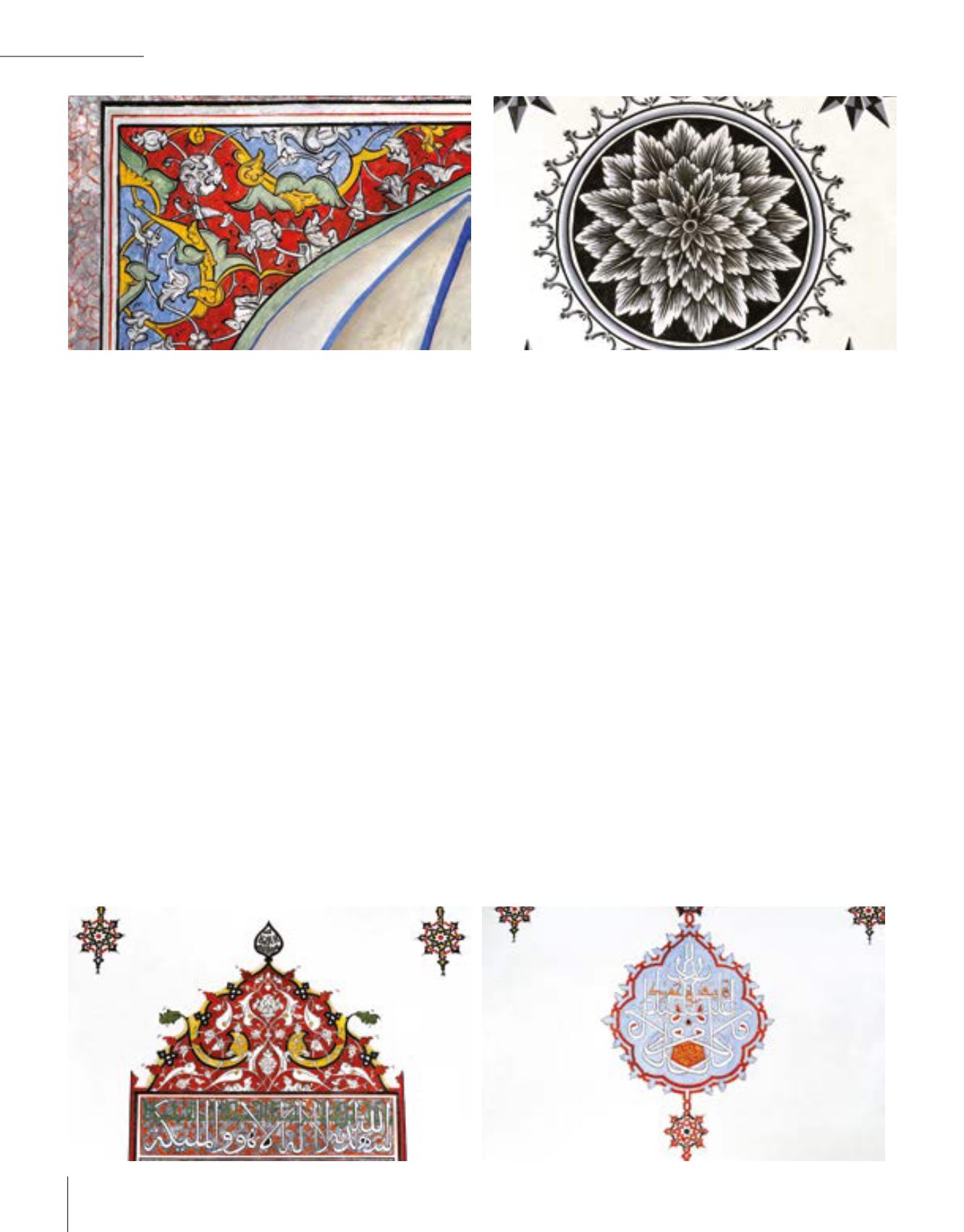
78
yakın plan
close - up
türbenin sahibi ise babası
ve amcalarının taht kavgaları
arasında kalmış bir şehzade,
kardeşi kardeşe kırdıran tüm
hırslardan uzak, mütevazı bir
yaşamı ve ölümü tercih eden
2. Murat. “Mezarımın üzerine
görkemli bir türbe yapmayın,
üstü açık olsun ve vücudumu
doğrudan doğruya toprağa
gömün ki Cenab-ı Hak’kın
rahmeti üstüme yağsın.”
notunu düştüğü vasiyetinde
babası Çelebi Mehmet gibi
saray benzeri bir türbe yerine
insanın, yaşamın ve ölümün
sadeliğine yakışır bir mezar
istemişti 2. Murat. Kendisinden
sonra 2. Selim Dönemi’ne
kadar başka isimler de katıldı
yanına ve Muradiye Külliyesi
“Bursa’nın Topkapı’sı” olarak
anılmaya, zaman içinde bir
Osmanlı aile kabristanına
dönüşmeye başladı. Külliyenin
son yapılan ve Muhteşem
Yüzyıl dizisinde canlandırılan
ölümünün ardından ziyaretçi
akınına uğrayan türbesi Sultan
Süleyman’ın oğlu Şehzade
Mustafa’ya ait. Külliyedeki
toplam 13 türbe yapısında
Fatih Sultan Mehmet’in annesi
Hüma Hatun’dan Mahidevran
Sultan’a, Şehzade Ahmet’ten
Şehzade Mahmut’a, 2.
Bayezid’ın annesi Gülruh
Sultan’dan kim oldukları
hakkında net bir açıklama
yapılamayan çeşitli saray
eşrafına kadar birçok kişi
yatıyor. Ölümün varlığı genelde
ürpertici olsa ve bu konuda
konuşmak pek tercih edilmese
de tıpkı Yakup Kadri’nin dediği
gibi Muradiye bu korkuyu
ortadan kaldıran bir havaya
sahip. Özellikle şimdiki;
geçmişin tüm kasvetinden
arınmış, ölümün ağırlığını
üzerinden atmış yeni haliyle
ziyaretçilerine bambaşka bir
kapı açıyor. Muradiye semti
bir anlamda ölülerin ruhlarıyla
hayat buluyor.
Sürgün bir hayatın
huzur durağı
Hayat görüşünün sadeliğine
rağmen hayatı savaş
enlightening epitaphs, Muradiye
Madrasa, life story of exiled Cem
Sultan, “the ill-fated prince”, and
the memories of 40 dynasty
members who have a close
bond with 600 years of Ottoman
history. Muradiye Complex now
means even more: Last year,
it was accepted for UNESCO
World Heritage List under the
membership file “Bursa and
Cumalikizik: The Birth of the
Ottoman Empire.” Thus, as of
2014, Bursa became a Heritage
Site of High Universal Value, 12th
of its kind in Turkey and 998th on
the globe.
“One who wonders the
meaning of ethereal silence
and peace should visit
Muradiye Tomb in Bursa!
It is the only place where
death is not frightening.
It is the only place where
the paradise, promised
by holy books, seems
possible. Every minute
spent here is like the wing
of an angel.” Yakup Kadri
Karaosmanoğlu
Since the first step, Muradiye
takes you to a different world, to
a realm of dreams. This quarter
has an indescribable influence
that has inspired many travelers,
poets and authors. The reason
for this spiritual glamour is,
evidently, the Muradiye Complex.
The person resting in the first
ever tomb in the complex is
Murat II. The prince was torn
between the fight for throne by
his father and uncles; but he was
far from any greed that led to
fratricide and preferred a modest
life and death. In his will, Murat
said, “Do not build a pompous
mausoleum on my grave; let it
be in open air and bury my body
directly into the soil so that the
rain and benediction of God
pours down on me.” Thus, unlike
the mausoleum of his father
Çelebi Mehmet, Murat II wanted
a tomb worthy of the plainness
of man, life and death. In the
course of time, other names
joined him in the graveyard until
the era of Selim II, whereupon,
Muradiye Complex was known
as “Topkapı of Bursa” and
became a family cemetery for
Ottoman dynasty. The most
recent tomb in the Complex
belongs to Prince Mustafa, son
of Suleiman the Magnificent.
Mustafa’s mausoleum is


